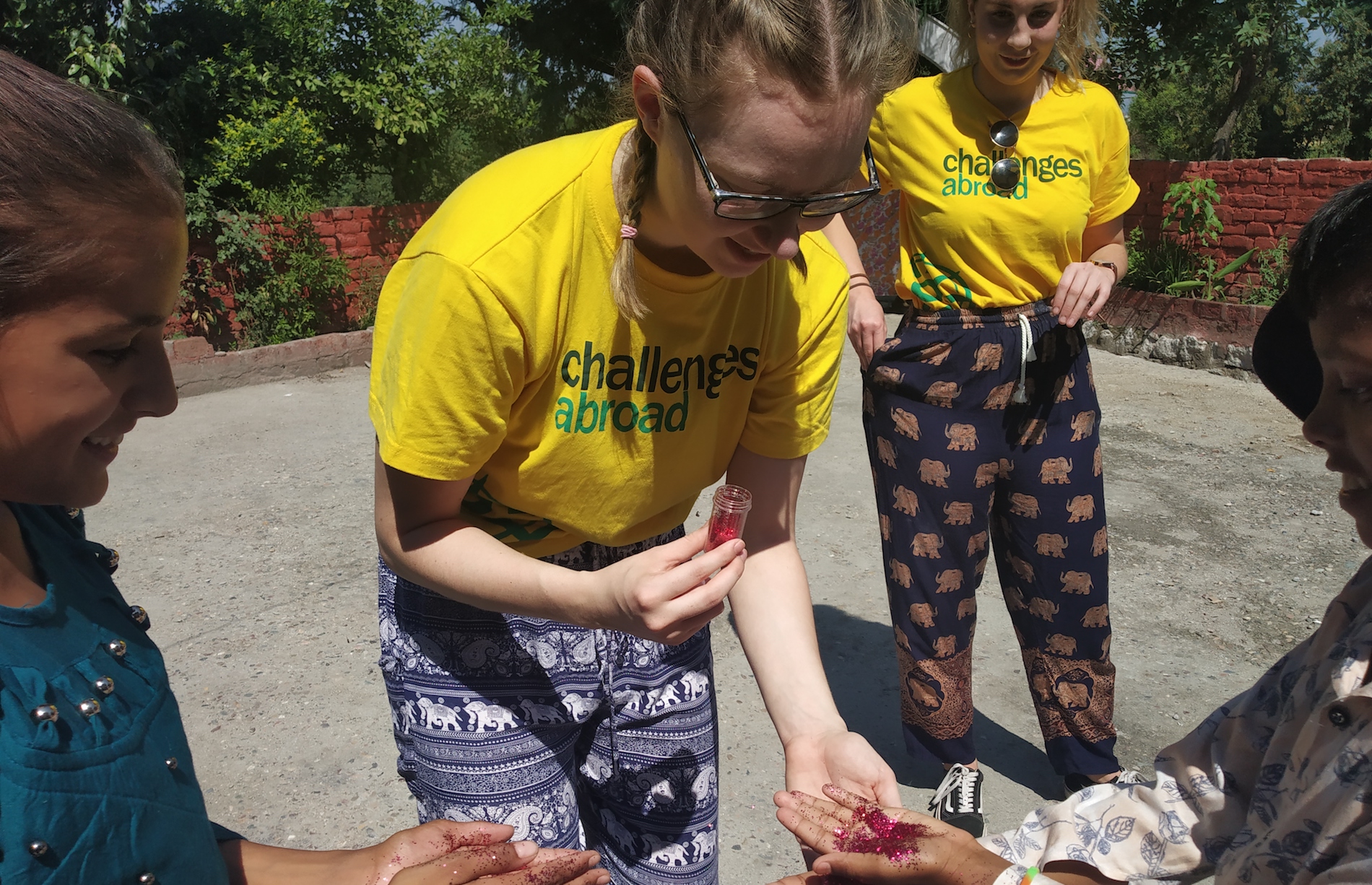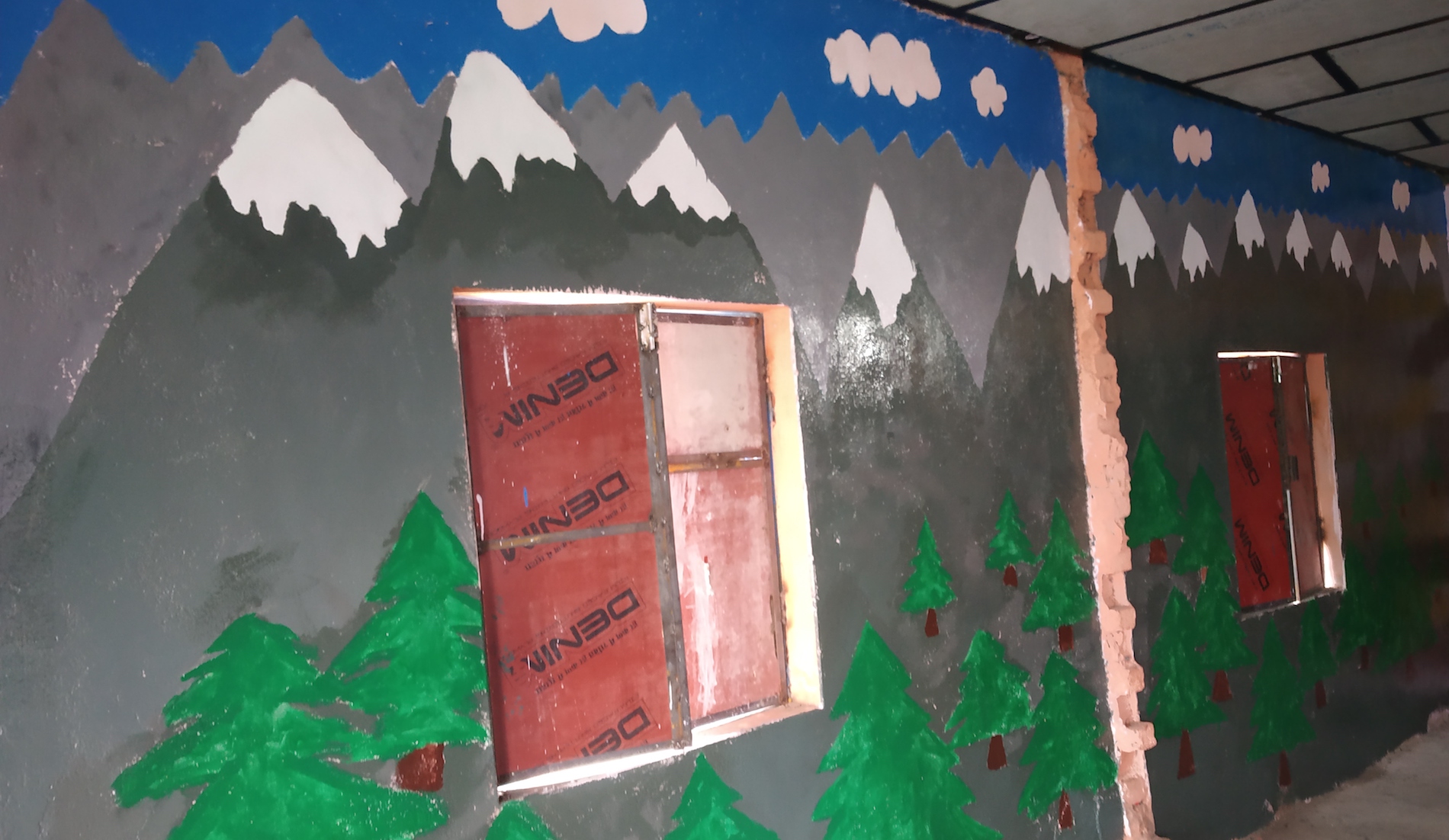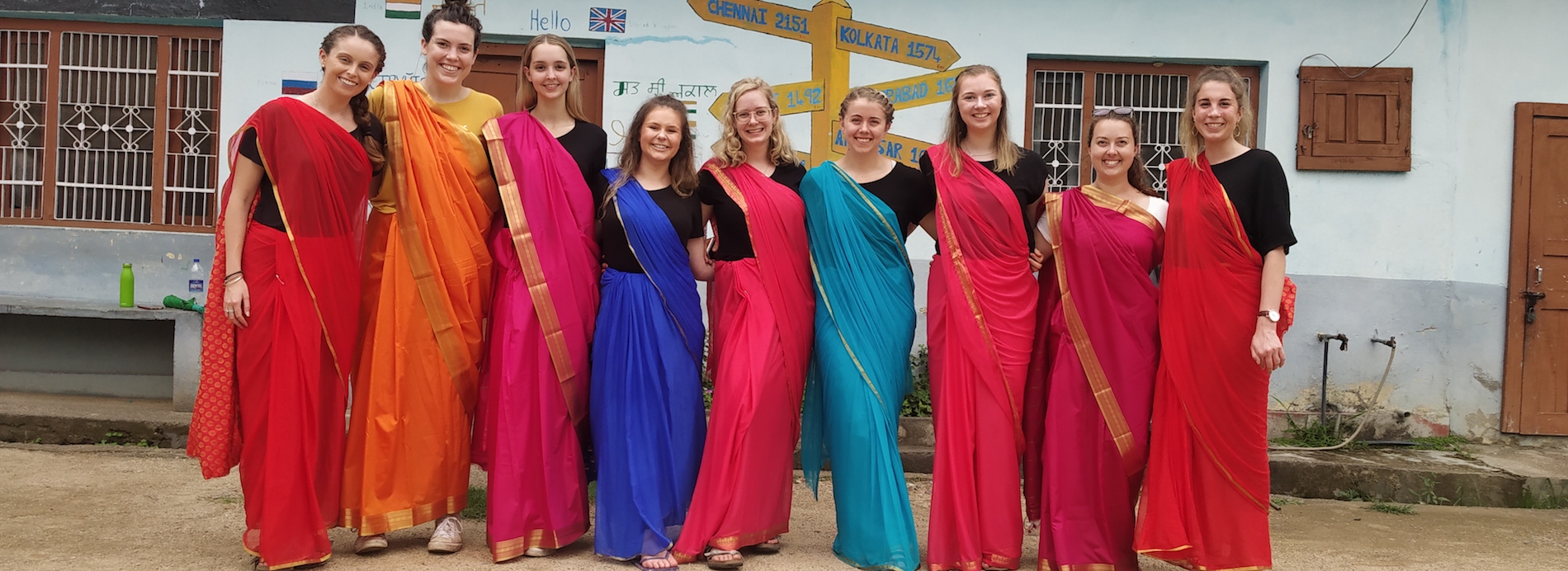My experience seeing positive change while volunteering in India
by hannah watts
My volunteer teaching experience was based in Palampur, India, at a public school surrounded by rice fields in the Gopaplur region. Each morning, my team and I would drive 40 minutes through the winding mountain roads to the school. We passed green tea fields, roadside stalls, donkeys and livestock and a wide river. The scenic drive ended on the side of the road beside the rice paddies. Our small walk to the school from the road passed cows pulling wooden ploughs through soil. Locals were barefooted in the mud, pants rolled up, planting rice seedlings from a low crouch. As we arrived, the mountains of Himachal Pradesh rose up proudly as the school's backdrop.
The school itself was a former apartment block - a small concrete building of three stories with external stairs reaching to each level. Because of this, the students had no play area, as opposed to other local schools, which were purposefully built as facilities with areas for recreation. I couldn’t help but notice that beyond the colourful school gates, the only space the students had for activity was a small concrete quadrangle. There was no shade from the hot Indian sun or shelter from monsoonal rains. The school had no grassed area and no equipment such as monkey bars, basketball rings, soccer nets, cricket stumps or even hopscotch painted on the concrete. It was evident that Sri Chamunda had a lack of resources and little financial support which highlighted to my team the importance of the school’s partnership with Challenges Abroad's charity, the FutureSense Foundation.
The classroom my team and I were teaching in was located on Level 2 which overlooked the rice paddies and faced the Chamunda Devi Temple. On our first day we were greeted with a traditional welcome by grinning students and their teacher at the school gate. We were presented with a colourful necklace from the temple which was made of pink and yellow threads. A red bindi was pressed onto our foreheads. Each morning we were greeted at the gate with a chorus of “Good morning Ma’am!”. The boys and girls, aged from four to twelve, would run up to us and shake our hands with big smiles.
Most of the students were very confident, talkative and excited by their new visitors. Accompanying my team was a translator who would assist with rephrasing questions or instructions in Hindi and English. Whilst this assisted our classroom activities, my team and I also found useful ways to communicate through hand gestures like thumbs up/thumbs down. We were impressed by the students ability to ask questions though and we encouraged them to practice their conversational English skills if they needed help.
When my team and I were developing our lesson plans we placed a strong focus on health, exercise, the environment and nutrition. During our health segment we taught the students various actions that represented hygienic behaviours. This included brushing their teeth, coughing into their elbow, cleaning their body, having a bath as well as washing their hands before eating and after going to the bathroom. We then took the students outside to provide an example of how we can keep sanitary and prevent the spread of germs. We selected several students to carry ‘germs’ and sprinkled red glitter into their palms, before asking them to interact with their classmates. Soon enough, through hi-5s, handshakes, and accidental touches, the whole class was contaminated with the ‘germs’. The students giggled and showed us their shimmering red palms.

We had asked them in the classroom why bacteria can be bad for their health. They understood that bacteria and germs can cause infections and make them sick. The students then demonstrated to us the washing hand motions we had taught them. Under a running tap they rubbed the front and back of their hands. The glitter washed off and the students proudly waved their clean hands in the air. In other lessons students sketched colourful food pyramids based on their diets at home; traced my body with chalk on the concrete and labelled various body systems; demonstrated stretches and exercises; explored vocabulary on the environment/pollution and unpacked problems and solutions to each topic.
Topics included air pollution, water pollution, agriculture, plastics, recycling, putting rubbish in the bin etc. These lessons aimed to provide education on the United Nations Sustainable Development Goal 6: Clean Water and Sanitation as well as Goal 14 and 15: Protecting Life Under Water and Life On Land. Through class discussions and activities my team and I observed that the students were able to improve their auditory listening skills, verbal communication, written skills and knowledge about health related issues.
Anther one of my team’s focuses was ensuring the boys and girls were treated equally as per Sustainable Development Goal 5: Gender Equality. We had observed a lower attendance rate for females, even at primary school age, and therefore our class was dominated by competitive males. It was common for the girls, and particularly the older ones, to be less confident in participating in activities and class discussions. Their coursework had exemplified to us they were capable learners but they would rarely answer a question in front of the class. Wherever we had the opportunity, my team would deliberately pick a female student to come to the front of the class to share their work. In teamwork games such as soccer, partnered charades or role plays we would make sure to have mixed teams to allow both genders to work together and build friendships. It was our aim to create positive relationships and remodel equal treatment that may not always be present within the community.
In the second week, the monsoonal weather brought its own challenges. The seasonal rain cast grey clouds across Gopalpur. The sky became dim and the strong winds caused power outages. In the assembly room, water would run under the door and flood a small pool in the concrete floor. The classroom that we were working in was cramped and had two barred windows on the right wall overlooking the court yard; the windows swung inwards which would often block the view of the blackboard. We became aware of the many challenges the students and teachers face during the wet season. There was one single lightbulb in the ceiling which went out one afternoon. With little light coming in through the window, and no electricity, the dark classroom made it difficult for the students to see their own work. It highlighted to us the importance of FutureSense’s mission to create positive and sustainable learning environments, as well as the value of the charity’s resources and volunteers who assist with renovations.
Part of our project was not only teaching, but also refurbishing the school. Upstairs in the assembly room, my team and I were adding some much needed colour and vibrancy to the place. We spent the two weeks sanding the concrete walls, washing off the residue with water and sponges and finally layering a pale white undercoating over the top. We then sketched on our design of mountains ranges on a far wall, and a solar system on another. As we were a small team, we worked hard to paint as much as we could in the afternoons after teaching. The final product looked great. The mural of the mountains represented the student’s home of Himachal Pradesh and the labelled solar system added an educational focus to the room as well.

At the end of the two weeks my team and I were lucky enough to visit another local school. Evident were the years of positive volunteer input here compared to the other school that was only a new partner of the FutureSense Foundation. Educational murals coloured every wall creating an inviting learning environment. Each classroom had plenty of light and had enough tables and chairs to fit the space. The teachers and students that were at the school were full off enthusiasm and joy. I was able to develop an understanding of the start and end point of long term volunteer impact.
The achievements at this school made me feel hopeful for the future growth of our first school. I feel content knowing the input of Challenges Abroad volunteers together with the FutureSense Foundation has already provided meaningful change to schools in India. I'm looking forward to seeing the long lasting impact in students, their families, the teachers and in the wider community too.





